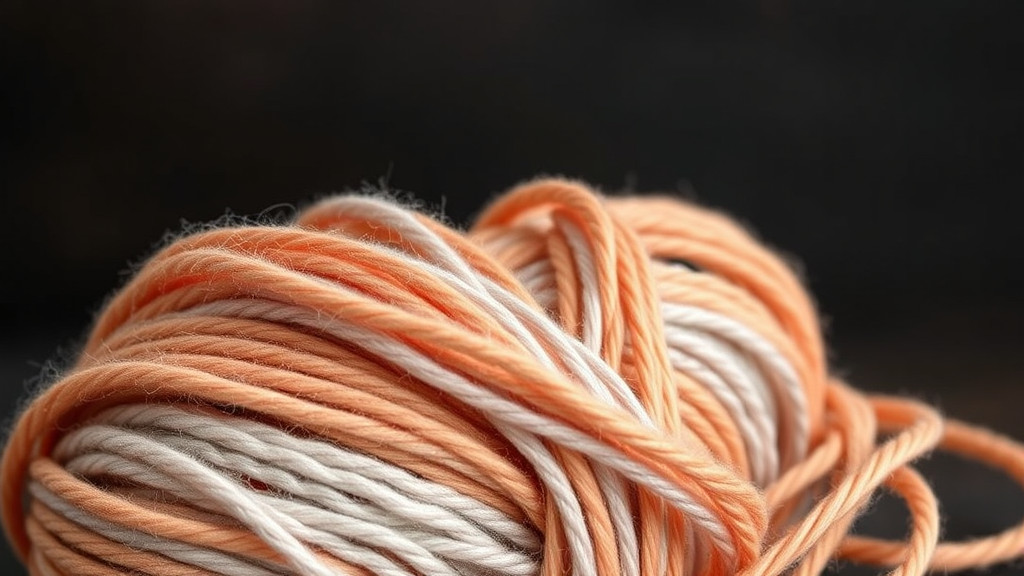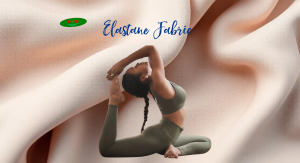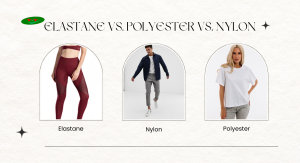Covered elastic yarn is a versatile and essential component in the textile industry, known for its unique properties that enhance comfort and fit. By pairing covered elastic yarn with various other materials, manufacturers can create innovative fabrics that meet diverse needs and preferences across different applications. This article delves into the intricacies of covered elastic yarn, its composition, advantages, and how it interacts synergistically with other materials.
Understanding Covered Elastic Yarn

To appreciate the full extent of covered elastic yarn, it’s crucial to understand what it is made from, its characteristics, and its applications in the textile industry. This section will cover the definition and components of covered elastic yarn, as well as its advantages and usage in various textiles.
Definition and Composition of Covered Elastic Yarn
Covered elastic yarn is essentially a combination of a core elastic fiber, typically spandex, wrapped by another fiber, such as nylon or polyester. This specific construction gives covered elastic yarn its inherent stretchability while allowing designers the freedom to choose outer fibers that suit their fabric requirements.
The primary component, spandex, provides significant elasticity, allowing the yarn to return to its original shape after stretching. The outer covering not only enhances durability but also provides additional texture and aesthetic appeal. Depending on the intended application, manufacturers can select different combinations of fibers that fulfill specific performance criteria.
This unique construction makes covered elastic yarn ideal for various end products, from activewear and swimwear to intimate apparel and medical textiles. Understanding the interplay between the core and wrap fibers is vital. It enables manufacturers to tailor fabrics that offer comfort, flexibility, and longevity.
Properties and Advantages of Covered Elastic Yarn
The elastic properties of covered elastic yarn make it incredibly beneficial for numerous applications. Its elasticity allows garments to maintain their shape, offering users a comfortable fit without constriction. Here are some key properties:
- Durability: Covered elastic yarn is resistant to wear and tear, making it suitable for high-stress applications. Fabrics made from this yarn can withstand repeated stretching and washing without losing their integrity.
- Comfort: The softness of the outer fibers ensures that the fabric feels good against the skin. This feature is particularly important for clothing items worn close to the body, such as leggings, underwear, and sports bras.
- Versatility: With the ability to combine different fibers, covered elastic yarn can be adapted for various uses—from lightweight summer garments to warm winter wear. This versatility makes it a favorite among designers.
- Moisture Management: Depending on the outer fiber choice, covered elastic yarn can exhibit excellent moisture-wicking properties, making it suitable for activewear that requires breathability.
These advantages underscore why covered elastic yarn continues to gain traction in the textile market. As consumer demand shifts towards high-performance and multifunctional clothing, the importance of this material becomes even more pronounced.
Applications of Covered Elastic Yarn in the Textile Industry
The applications of covered elastic yarn span multiple sectors within the textile industry. From fashion to functional garments, its adaptability has led to widespread adoption.
Fashion Apparel: In contemporary fashion, covered elastic yarn is often used in form-fitting garments like dresses, swimsuits, and athletic wear. Designers appreciate its ability to provide both structure and stretch, ensuring garments look stylish while still being practical.
Underwear and Lingerie: The lingerie industry heavily relies on covered elastic yarn. The combination of softness and stretch creates comfortable yet supportive undergarments that cater to various body types.
Activewear: As fitness culture grows, so does the demand for performance-driven clothing. Covered elastic yarn’s moisture-wicking and stretch capabilities make it ideal for yoga pants, sports bras, and running gear.
Medical Textiles: Beyond fashion, covered elastic yarn finds its place in medical textiles, such as compression garments. These products rely on the elasticity of the yarn to provide necessary support without compromising comfort.
The broad array of applications for covered elastic yarn speaks to its importance in textile innovation. As industries continue to evolve, the development of new blends and techniques promises even greater uses for this versatile yarn.
Comparison with Other Types of Elastic Yarns
While covered elastic yarn stands out for its unique qualities, it is essential to compare it with other types of elastic yarns to grasp its relative advantages.
Natural vs. Synthetic Elastic Yarns: Natural elastic yarns, like rubber or cotton elastane blends, offer different benefits compared to synthetic counterparts. While natural options may provide better breathability, they often lack the durability and elasticity of covered elastic yarn.
Full-Fashioned Yarns: Unlike typical elastic yarns that might be knitted directly into the fabric, covered elastic yarn is constructed with a separate core and covering. This allows for more design flexibility—particularly in terms of texture and appearance—compared to other yarn types.
Blended Yarns: Some manufacturers opt for blended elastic yarns combining fibers like cotton, wool, and spandex. Although these blends can offer specific characteristics suited to certain applications, they generally lack the overall performance metrics of covered elastic yarn.
In essence, while there are various types of elastic yarn available, covered elastic yarn remains a preferred choice for many textile manufacturers due to its exceptional properties and versatility across different uses.
The Role of Spandex in Covered Elastic Yarn
Spandex plays an integral role in defining the properties of covered elastic yarn. As a fiber known for its superior elasticity, spandex contributes significantly to the performance characteristics of the final fabric. This section will delve deeper into spandex, its benefits when used in covered elastic yarn, and considerations around environmental sustainability.
Introduction to Spandex Fiber
Originally invented in the late 1950s, spandex has revolutionized the textile industry with its unparalleled stretch capabilities. Made from polyurethane, this synthetic fiber is known for its strong elastic properties, allowing it to stretch up to five times its original length while maintaining recovery.
Spandex fibers are inherently soft, lightweight, and quick-drying. When combined with other fibers to produce covered elastic yarn, spandex enhances the overall comfort and performance of the resulting fabric, making it ideal for activewear, undergarments, and more.
Benefits of Using Spandex in Covered Elastic Yarn
Integrating spandex into covered elastic yarn brings about several notable benefits:
- Shape Retention: Fabrics containing spandex are less likely to sag or deform over time. This property is particularly valuable in garments that undergo extensive movement, such as activewear and swimwear.
- Enhanced Comfort: Spandex contributes to the smooth drape of fabric, reducing friction against the skin and enhancing wearer comfort. This is invaluable in garments where snug fits are desired.
- Improved Fit: The addition of spandex allows for tighter fitting designs without compromising comfort. Garments conform to body shapes, providing a flattering silhouette while allowing ease of movement.
- Durability: Spandex has impressive resistance to degradation from heat, light, and chlorine. This durability extends the lifespan of fabrics, making them suitable for repeated wear and laundering.
By understanding the role of spandex as a core component of covered elastic yarn, manufacturers can leverage its properties to create high-performance textiles that cater to modern consumers’ desires for comfort, durability, and style.
Performance Characteristics of Spandex-Covered Yarns
The performance characteristics of spandex-covered yarn are multifaceted, illustrating why this yarn type is favored in many applications:
Elasticity: The most critical feature, as highlighted earlier, is the extraordinary elasticity provided by spandex. This characteristic ensures that the fabric returns to its original form after stretching, which is paramount for maintaining garment integrity.
Recovery: Spandex fibers excel at recovering their shape after elongation. This recovery capability prevents sagging, ensuring that garments retain their fit over time.
Breathability: While spandex itself is not breathable, when integrated into covered elastic yarn with breathable fibers, manufacturers can achieve a balance between elasticity and air permeability, leading to comfortable wear in various conditions.
Resistance to Abrasion: Spandex fibers have strong resistance to abrasion, contributing to the longevity of textiles made from covered elastic yarn. This quality ensures that garments can withstand daily wear and tear without compromising appearance or performance.
The performance characteristics of spandex-covered yarn showcase its relevance in today’s fast-paced fashion and textile industries. As consumers increasingly prioritize comfort alongside style, spandex’s role in covered elastic yarn cannot be understated.
Environmental Considerations and Sustainability
As the textile industry evolves, sustainability has emerged as a pressing concern. The production and disposal of synthetic fibers, including spandex, raise questions regarding their environmental impact.
Many brands are now looking for ways to incorporate sustainable practices in their sourcing and manufacturing processes. Innovations such as recycling spandex and using bio-based alternatives are gaining traction. Brands committed to sustainability aim to strike a balance between performance and eco-friendliness, paving the way for greener future solutions.
Additionally, understanding how spandex integrates with other fibers can lead to better waste management practices. By combining spandex with recycled materials, manufacturers can reduce their reliance on virgin resources while still producing high-quality covered elastic yarn.
Sustainability is gradually influencing consumer choices, and any brand invested in the long-term success of its products must consider how their materials align with eco-conscious principles.
Covered Elastic Yarn HS Code Classification
An important aspect of trading textile materials internationally involves the proper classification of commodities through Harmonized System codes. Properly classifying covered elastic yarn is crucial for compliance with import/export regulations and for understanding trade statistics.
Importance of HS Codes in International Trade
HS codes serve as an international nomenclature system for the classification of traded goods. These codes help customs officials assess tariffs, monitor trade flows, and enforce regulations. For manufacturers, understanding HS code classification is vital for smooth international operations.
The correct classification of goods impacts duties payable, export licenses, and compliance with trade agreements. Misclassifications can lead to costly penalties and delays, highlighting the importance of accurate knowledge surrounding HS codes.
HS Code Specifics for Covered Elastic Yarn
Covered elastic yarn falls under specific HS code categories, usually classified based on its material composition. For instance, yarns that primarily consist of spandex and other synthetic fibers are classified differently than those comprising natural fibers.
Understanding these classifications can assist businesses in navigating the complex world of international trade regulations. For example, manufacturers should know whether their products qualify for reduced tariff rates under certain free trade agreements.
By familiarizing themselves with the relevant HS codes, businesses can ensure compliance and potentially save costs associated with tariffs and duties.
Key Factors Affecting HS Code Determination
The determination of an HS code depends on several factors:
- Material Composition: The primary fiber content influences classification. Covered elastic yarn featuring different outer fibers may have varying HS codes.
- End Use: The intended use of the yarn can affect its classification. If it is designated for a specific industrial application, this may lead to a different categorization.
- Manufacturing Process: The method used to create the yarn, such as whether it is twisted, woven, or knitted, can also determine the applicable HS code.
By considering these factors, businesses can ensure they classify their products accurately and avoid costly mistakes that could hinder their operations.
Import and Export Regulations Related to Covered Elastic Yarn
Navigating the regulatory landscape of importing and exporting covered elastic yarn requires an understanding of pertinent regulations. Compliance with customs requirements is essential to avoid delays or penalties.
Customs authorities often require detailed documentation regarding the nature of the product, its HS code, and its country of origin. Additionally, companies must stay updated on any changes in trade policies that could impact their operations.
Furthermore, businesses should be aware of any quotas or restrictions imposed on certain products. Maintaining strong relationships with customs brokers or trade specialists can help streamline the process of importing and exporting covered elastic yarn.
Anoop Industries: A Leader in Covered Elastic Yarn Manufacturing
Anoop Industries is a prominent player in the covered elastic yarn manufacturing sector, known for its commitment to quality, innovation, and customer satisfaction. This section explores the company’s background, its range of products, and its advanced practices in yarn production.
Overview of Anoop Industries
Founded with a vision to redefine textile manufacturing standards, Anoop Industries has grown significantly in the covered elastic yarn domain. With decades of experience, the company has established itself as a trusted name among textile manufacturers and suppliers worldwide.
Anoop Industries prioritizes sustainable practices, investing in technology and research to develop eco-friendly yarn alternatives. Their commitment to continuous improvement drives them to implement state-of-the-art machinery and processes, ensuring top-tier products for their customers.
Product Range and Specialties in Covered Elastic Yarn
Anoop Industries offers a comprehensive range of covered elastic yarns tailored to meet various industry needs. Whether for fashion apparel, activewear, or medical textiles, their products are designed to provide exceptional performance and comfort.
Their specialties include:
- Custom Blends: The company works closely with clients to create custom yarn blends that align with specific performance requirements.
- Innovative Finishes: They employ innovative finishing techniques to enhance the functionality of their yarns, resulting in improved moisture-wicking, antibacterial properties, and UV protection.
- Technical Support: Anoop Industries provides technical assistance to clients, helping them select the appropriate yarn for their applications and guiding them through the manufacturing process.
By prioritizing collaboration and customization, Anoop Industries solidifies its position as a leader in the covered elastic yarn space.
Quality Assurance Practices at Anoop Industries
Quality assurance is a cornerstone of Anoop Industries’ operations. The company adheres to rigorous quality control measures at every stage of the production process, ensuring that each batch of covered elastic yarn meets stringent performance standards.
Key practices include:
- Raw Material Selection: The company sources high-quality raw materials, assessing their suitability before integrating them into production.
- Continuous Testing: Throughout the manufacturing process, yarn samples undergo extensive testing to evaluate elasticity, strength, and durability.
- Customer Feedback: Anoop Industries actively seeks customer feedback to identify areas for improvement and refine its products accordingly.
By fostering a culture of quality and accountability, Anoop Industries guarantees that its covered elastic yarn consistently exceeds customer expectations.
Innovations and Technological Advancements in Production
Staying ahead of industry trends requires ongoing innovation and technological advancements. Anoop Industries invests significantly in research and development, aiming to introduce cutting-edge processes and materials that redefine covered elastic yarn production.
Some recent innovations include:
- Eco-Friendly Fibers: The company has begun exploring biodegradable and recycled yarn options, aligning with the growing demand for sustainability in textiles.
- Smart Textiles: Anoop Industries is researching smart textiles that incorporate covered elastic yarns with embedded sensors, paving the way for enhanced functionalities in activewear.
- Digital Integration: Embracing Industry 4.0 technologies, Anoop Industries leverages data analytics and automation to optimize production efficiency and reduce waste.
Through these innovative efforts, Anoop Industries reinforces its commitment to pushing the boundaries of what is possible in covered elastic yarn manufacturing.
Choosing the Right Covered Elastic Yarn for Your Needs
Selecting the right covered elastic yarn for your project is crucial to achieving optimal results. This section outlines key considerations when choosing covered elastic yarn, tips for sourcing quality materials, and common misconceptions about this specialized product.
Factors to Consider When Selecting Covered Elastic Yarn
When evaluating covered elastic yarn options, various factors come into play that can influence the final outcome of your textile product:
- Fiber Composition: Understand the fibers used in the yarn. The choice of outer fiber can significantly impact both the aesthetic and performance characteristics of the finished fabric.
- Elasticity Requirements: Determine the level of stretch required for your application. Different covered elastic yarns offer varying degrees of elasticity, which can affect fit and comfort.
- End Use: Consider the intended purpose of the fabric. High-performance athletic garments, casual wear, and medical textiles may require different specifications in terms of durability, breathability, and moisture management.
- Production Methods: Assess whether the yarn is suitable for the manufacturing methods you plan to use. Compatibility with knitting, weaving, or other processes is paramount for successful production.
Being mindful of these factors helps ensure that the selected covered elastic yarn aligns with your vision and meets performance expectations.
Tips for Sourcing Quality Covered Elastic Yarn
Finding reputable suppliers of covered elastic yarn is essential for maintaining the quality of your final product. Here are some tips for sourcing effectively:
- Research Suppliers: Take the time to investigate potential suppliers. Look for established manufacturers with a track record in the industry.
- Request Samples: Before committing to a large order, request samples of covered elastic yarn to assess its quality and performance characteristics firsthand.
- Check Certifications: Verify whether the supplier adheres to recognized industry standards and certifications related to quality control and sustainability.
- Engage in Communication: Establish open communication with suppliers to discuss your specific requirements. A responsive supplier will often be more reliable and accommodating.
By following these tips, you can build strong partnerships with suppliers and enhance the likelihood of successfully meeting your project goals.
Evaluating Suppliers: What to Look For
When evaluating potential suppliers for covered elastic yarn, it’s important to consider several factors:
- Experience and Reputation: Review the supplier’s history in the industry. A strong reputation often indicates reliability and quality.
- Product Variety: A supplier who offers a wide range of covered elastic yarn options may better accommodate specific needs or requests for customization.
- Responsiveness: Assess how quickly and thoroughly the supplier responds to inquiries. Good communication is crucial for addressing any concerns during the ordering process.
- Customer Reviews: Seek feedback from other businesses that have worked with the supplier. Testimonials can provide insights into product quality and service reliability.
Taking the time to conduct thorough evaluations ultimately leads to better outcomes and fosters lasting business relationships.
Common Misconceptions About Covered Elastic Yarn
Despite its popularity, several misconceptions about covered elastic yarn persist. Addressing these can help clarify its value and expand awareness of its applications:
- All Elastic Yarns Are the Same: Many assume that all elastic yarns offer similar properties. In reality, covered elastic yarn features specific combinations of fibers that result in distinct characteristics.
- It Can Only Be Used in Stretchy Fabrics: While covered elastic yarn excels in stretchy applications, it can also be blended with non-elastic materials, broadening its usability beyond merely elastic garments.
- Higher Cost Equals Better Quality: Not all expensive covered elastic yarns guarantee superior performance. It’s essential to evaluate quality based on specifications rather than price alone.
By dispelling these misconceptions, manufacturers and designers can make informed choices that utilize covered elastic yarn effectively in their projects.
Conclusion

Covered elastic yarn is an invaluable asset in the textile industry, offering versatility and performance that few other materials can match. As we explored throughout this article, its unique properties stem from the blend of spandex and other fibers, leading to applications across fashion, activewear, medical textiles, and beyond.
As consumer preferences shift toward high-performance and sustainable fabrics, understanding the full capabilities of covered elastic yarn becomes increasingly important. Leading manufacturers, like Anoop Industries, exemplify how continuous innovation and adherence to quality standards pave the way for exciting developments in this area.
When selecting the right covered elastic yarn for your needs, it’s crucial to consider factors such as fiber composition, elasticity requirements, and end-use applications. By investing in quality materials and establishing reliable supplier relationships, manufacturers can create exceptional products that resonate with today’s discerning consumers.
Ultimately, the journey of covered elastic yarn is just beginning. As the textile industry continues to evolve, its potential for creativity and innovation represents a promising horizon that will inevitably enhance the fabrics of our future.
Address: Thanh Hoa Hamlet, Thanh Dien Commune, Chau Thanh District, Tay Ninh Province, Vietnam
Mobile/whatsap: (+84) 984.841.239
Mail: sale@tanithread.com
Website:https://tanithread.com/



